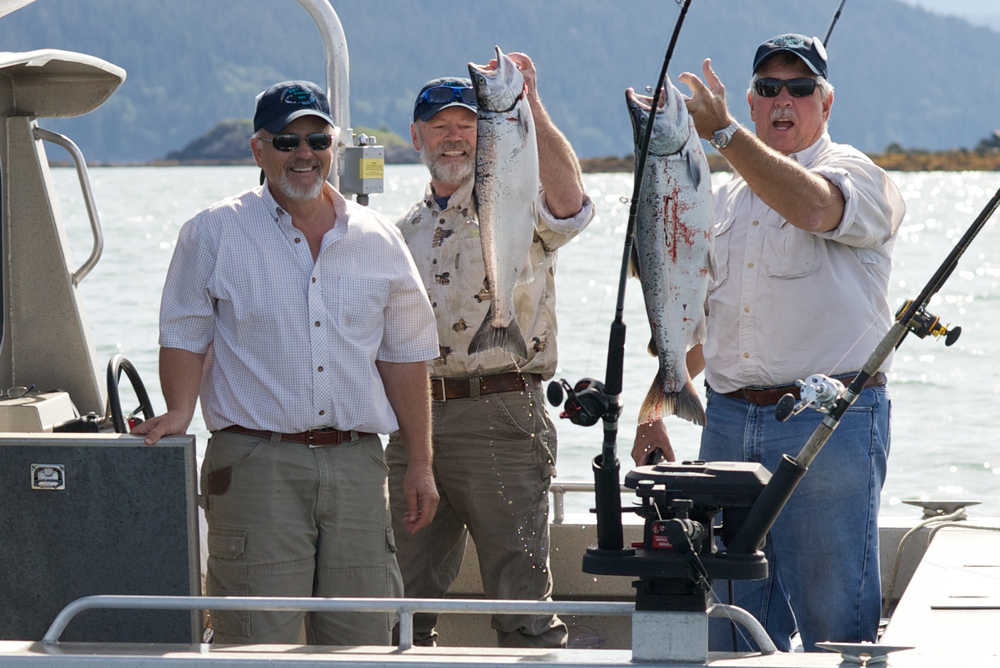The National Oceanic and Atmospheric Administration released its annual report detailing national and regional economic impacts of U.S. fisheries and, as usual, Alaska produced both the greatest value and volume of any area.
The report includes economic impacts in the harvesting, processing, wholesale, retail and import sectors, as well as those from recreational saltwater fishing.
In 2014, the nation’s commercial seafood industry produced 1.4 million full- and part-time jobs, $153 billion in sales (including imports), $42 billion in income and $64 billion in value-added impacts. Domestic harvests produced $54 billion in sales.
Alaska’s seafood industry employs more people than any other private industry in the state. California supported most of the nation’s 1.4 million seafood jobs in 2014 with 143,440. Alaska’s industry supported 60,749 jobs.
NOAA oversees all fisheries in U.S. waters from three to 200 miles off the coast, with management rules crafted by eight regional councils created under the 1976 Magnuson-Stevens Act.
In 2014, U.S commercial fishermen harvested a total market value of $9.4 billion worth of finfish and shellfish, worth $5.5 billion in dockside value to fishermen.
The U.S. most valuable seafood product in 2014 was shrimp, which represents $702 million in market value. Pacific salmon came in second, representing $617 million in overall value. Lobster and scallops came in third and fourth, representing $567 million and $424 million, respectively.
North Pacific fisheries, dominated by walleye pollock and Pacific salmon, accounted for the greatest volume and value of the eight regions.
NOAA separates seafood into finfish and shellfish. Finfish includes groundfish like walleye pollock.
Alaska caught the most finfish, representing 68 percent of the nation’s total. California produced the most shellfish with 260 million pounds, followed by Louisiana and Maine’s shrimp and lobster catches.
In volume terms, pollock produced three times more sheer poundage than the next species, menhaden. Fishermen in the North Pacific harvested 3.1 billion pounds of walleye pollock in 2014, around 55 percent of the region’s total seafood landings.
Pacific salmon’s value adds to pollock’s volume to make the North Pacific region the U.S. seafood industry’s largest. Of the $5.5 billion in nationwide dockside revenue, the North Pacific region produced $1.7 billion, or 31 percent of the total. Half came of that from Pacific salmon and pollock revenue.
North Pacific fishermen made the most income from salmon, pollock, and crab in 2014. For Alaska fishermen, the three species comprised 69 percent of the region’s total value. Salmon produced the most revenue with $546 million, followed by $400 million from pollock and $238 million from crab.
North Pacific waters did display some marked reductions in certain seafood, however. From 2013 to 2014, the overall halibut harvest declined by 70 percent, and the Pacific sablefish harvest declined by 31 percent. Pacific salmon landings declined by 33 percent, attributable mainly to the difference between 2013 pink salmon — one of the largest harvests on record — and the corresponding down cycle in 2014. Pink salmon run strong every other year.
Recreational fisheries also played a large role in the U.S. marine economy, though Alaska’s numbers make a small amount of the national participation.
Nationwide, 11 million anglers participated in U.S. saltwater recreational fisheries, taking a total 68 million trips.
The recreational fisheries created $60.6 billion in sales impacts from fishing trips and related equipment, a 4 percent increase.
Jobs supported by recreational saltwater fisheries were concentrated heavily in Florida and California, which together represent 31 percent of overall jobs.
Alaska supported 1.2 percent of these jobs.
• Alaska Journal of Commerce reporter DJ Summers can be reached at daniel.summers@alaskajournal.com.

